
about | articles | authors | contact | links
 about | articles | authors | contact | links |
![]() Home > Articles > Infrared Photography > Electronic recording: Real time visualisation
Home > Articles > Infrared Photography > Electronic recording: Real time visualisation
INFRARED PHOTOGRAPHYAuthors: Prof. Robin Williams and Gigi Williams Electronic recording of the infrared image:
|
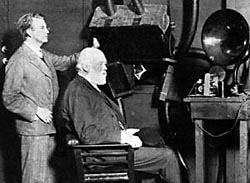 |
Figure 51 (left). The scientist Sir Oliver Lodge about to be 'Noctovised' with Baird's early infrared television system. Image courtesy Pittman Press. |
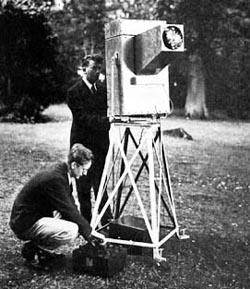 |
Figure 52. Baird's self-contained infrared viewer on show at Box Hill in 1929. |
Unfortunately, conventional video tubes are not sensitive to infrared, but tubes are manufactured that are sensitive in the extended red or infrared regions (most of which have been developed for use in night surveillance cameras.) The Newvicon tube has a sensitivity extending up to 900nm with a peak sensitivity between 700 and 800nm (Figure 53). This makes it an ideal electronic "partner' to photographic film. Most tube manufacturers like RCA, EMI, and GEC supply IR Vidicon tubes which have a sensitivity which extends to approximately 1200nm. Figure 54 shows the relative sensitivity of some different television tubes to infrared. The so called "chip" television cameras are all equipped with charge coupled devices which have an inherent sensitivity to infrared. For normal use, an infrared absorbing filter is fitted over the front of these CCDs. It is often a simple matter to remove this filter and utiilize this extended sensitivity. This incidentally also applies to digital still cameras as much as conventional a video cameras. Figure 55 shows the spectral response of the basic CCD and the filtered version. Wavelengths beyond 2000nm or 2mm are the province of thermography, and all thermographic systems are essentially "electronic."
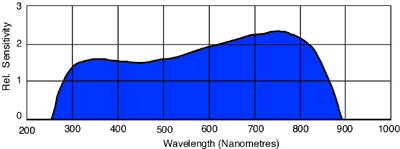
Figure 53 (above). The spectral response curve of the Newvicon infrared television tube.
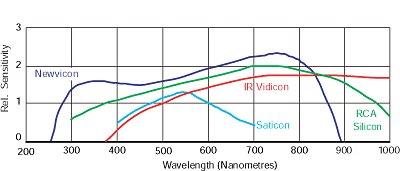
Figure 54 (above). Spectral response curves of some typical video tubes used for infrared imaging - usually in surveillance cameras.
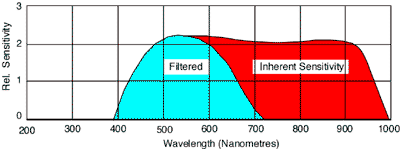
Figure 55 (above). The spectral response curve of a generalised CCD cell with and without the infrared absorbing over-filter.
| © 2002 Prof. Robin Williams and Gigi Williams - Disclaimer URL: http://www.medicalphotography.com.au/Article_03/ Last modified: 3 May 2002 |